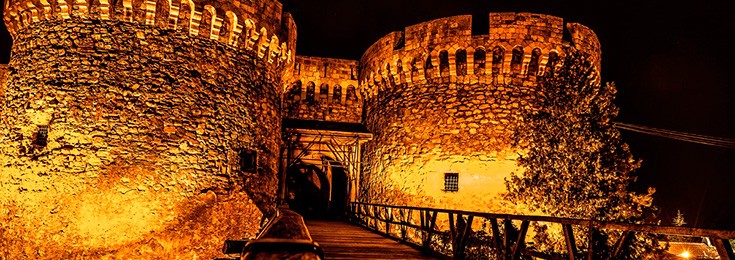
Belgrade Fortress or Kalemegdan Fortress is one of the main tourist attractions of the city of Belgrade. This monument tells a story of the “White City” and its proud history, bearing the scars of victories that came with high costs. Also, here visitors will have a hard time choosing what to visit out of along list of numerous museums, art galleries and other attractions, all of which cannot be visited in just one day.
The history of Belgrade’s Fortress is closely related to both the history of the city as well as that of the whole region. Due to its favorable position at the ridge above two great rivers, it is assumed that Belgrade was inhabited already in the Neolithic period. Almost 300 years before Christ, this area was populated by a Celtic tribe Scordisci which mixed with local Illyrian and Thracian tribes. Their presence was obvious even in the name of the city Singidunum (Singi-round, dunum- Celtic word for town).
Romans came to Belgrade and established the first military camp at the beginning of the first century. As a city on the border of the empire, the importance of Belgrade as well as of its fortification grew over time. The remains of these first Roman fortifications can even be seen today in some areas of the fortress.
After the Roman Empire was divided into the Eastern and Western Empire, Belgrade fell under the rule of the Eastern Roman Empire or Byzantine. In 411, the city was completely destroyed by the Huns. After this period, Belgrade changed the ruler numerous times in which even the Serbian Empire ruled the city on different occasions.
In the 15th century, the Ottoman Empire (the Turks) broke into these lands, conquered Serbia and reached Belgrade. In the next several hundred years, this city changed hands between the Turks and Austrian-Hungarian Empire, since it was a border city between these two empires. Only in 1807, the city was liberated by a Serbian leader of the First Serbian Uprising - Karađorđe Petrović. This victory was of a short life, since the Turks managed to seize the city soon afterwards. Belgrade was finally liberated by the leader of the Second Serbian Uprising - Miloš Obrenović.
Belgrade’s Fortress was heavily bombarded during the First World War together with the rest of the city, since again this city was on the border between Serbia and Austro-Hungarian Empire. Enemy forces tried to take it on several occasions, however they failed. From the beginning of the military campaign in this war on July 28th 1914, the fortress together with the city was successfully defended against joined forces of Germany and Austro-Hungarian Empire. On October 11th 1915, Belgrade was lost to the enemy, which marks the beginning of 3 year long occupation.
During the Second World War, Belgrade together with Belgrade’s Fortress was heavily damaged by both German as well as Ally bombing.
Keep in mind that this is only a short version of the history of the Belgrade’s Fortress and the city it is a part of. Therefore, when visiting this jewel of the city, keep in mind the number of people that died defending this fortress and pay respect to this old lady that stood on these grounds for centuries bearing the scars of the turbulent history of this region.
What to visit while at Belgrade’s Fortress
Belgrade’s Fortress offers numerous attractions that are located in different partsof this vast fortified area and we have selected just a few of them:
